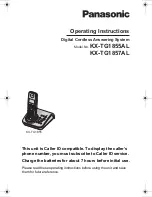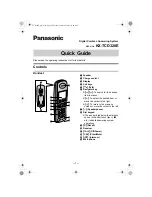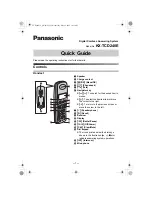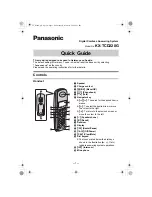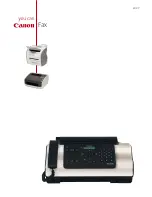
The Dialed In Menu System
B-17
Ball Trough Test
When you enter the
Ball Trough Test
, the LCD monitor will display the screen shown in figure
B17. The squares on the screen represent the current states of the six opto switch transmitter/
receiver pairs in the ball trough mechanism, under the lower part of the playfield. There are five
opto switches in the bottom of the trough (labeled “#1” to “#5”) and one higher, in the neck of the
trough VUK (labeled “jam”). A green square represents a blocked opto switch, typically caused by a
ball in that position in the trough. A tan square represents an unblocked opto switch (no ball in that
position). For reference, corresponding matrixed switch numbers are shown under each square.
You can use the
Enter
button to fire the trough VUK. The rightmost ball in the trough will be kicked
into the shooter lane, then auto-launched up the playfield. Most of the high power coils will be
enabled, so slingshots, pop bumpers, VUKs and flippers (if activated by the flipper buttons) will kick
a ball around as it rolls down the playfield - so
be careful with your fingers!
You can empty the
trough, one ball at a time (catching each one before it returns to the trough), and test all of the opto
switches in the process.
Note: When the coin door is opened, the game’s safety interlock switch (the upper switch on item
4b, pg C-2 of this manual) disables the 70-volt power running to the playfield. To allow coils to
function in the
Ball Trough Test
, you must either close the coin door or pull the safety interlock
switch’s actuator out (it will “click” and lock in place). When you close the coin door, the interlock
switch actuator will be pushed back into its normal (unlocked) position.
To exit the
Ball Trough Test
at any time, press the
Back/Escape
button.
Figure B17. Ball Trough Test screen.
Summary of Contents for Dialed in!
Page 2: ......
Page 4: ......
Page 15: ...Game Assembly Setup A 1 Game Assembly Setup Section A...
Page 43: ...The Dialed In Menu System B 1 The Dialed In Menu System Section B...
Page 99: ...Game Parts Information C 1 Game Parts Information Section C...
Page 104: ...Game Parts Information C 6 7 9 17 5 4 19 1 2 10 16 13 14 15 8 12 18 11 6 3 20 5 21 23 22...
Page 106: ...Game Parts Information C 8 1 2 3 4 5 6 7 8 9 10 11 12 13 18 15 16 14 17 19 20 22 21...
Page 114: ...Game Parts Information C 16 10 3 11 1 7 7 12 4 6 9 8 8 2 5 8a...
Page 126: ...Game Parts Information C 28 1 4 8 9 3 5 3 2 6 3 7...
Page 130: ...Game Parts Information C 32 7 2 4 8 1 11 3 10 5 6 12 15 9 13 14...
Page 148: ...Game Parts Information C 50 1 2 3 4 5 7 8 9 10 12 12 14 15 6 6 6 6 6 6 6 13 11...
Page 150: ...Game Parts Information C 52 1 2 3 4 5 6 7 8 9 10 12 10 10 10 10 11 11 13...
Page 160: ...Game Parts Information C 62 9 9 1 7 2 4 5 6 6 8 3...
Page 166: ...Game Parts Information C 68 1 2 3 4 5 6 9 10 11 12 13 14 17 19 21 22 26 27 28 35 36...
Page 168: ...Game Parts Information C 70 1 2 3 4 5 6 9 10 11 12 13 14 17 19 21 22 26 27 28 36 35...
Page 170: ...Game Parts Information C 72 41 42 44 45 46 47 48 57 58 59...
Page 172: ...Game Parts Information C 74 57 58 59 41 42 44 45 46 47 48...
Page 208: ...Game Parts Information C 110 1 2 2 2 3 4 5 6 11 9 10 10 10 7 8 12 12 12 13 15 14 16...
Page 210: ...Game Parts Information C 112 1 2 4 5 5 5 3...
Page 212: ...Game Parts Information C 114 1 2 5 6 7 8 4 9 11 10 12 13 14 15 17 17 18 19 20 21 16 24 23 22 3...
Page 222: ...Game Parts Information C 124 4 2 3 1 5...
Page 224: ...Game Parts Information C 126 1 2 3 1 2 3 4 4 5 5 5 5 5 5 5 5 5 5 5 6 6 9 8 10 7 11 13 12...
Page 236: ...Game Parts Information C 138...
Page 237: ...Reference Diagrams Schematics D 1 Reference Diagrams Schematics Section D...
Page 312: ...Reference Diagrams Schematics D 76...
Page 348: ...Reference Diagrams Schematics D 112 1 Fuse Locations In Bottom of Cabinet 4 2 3 In Backbox...
Page 354: ...Reference Diagrams Schematics D 118...
Page 355: ...Game Service Troubleshooting E 1 Game Service Troubleshooting Section E...
Page 367: ...Appendices...































